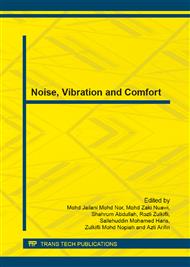p.285
p.293
p.299
p.306
p.313
p.319
p.324
p.329
p.335
Infinite Boundary Element Formulation for the Analysis of CP System for Submersible Pump
Abstract:
The effectiveness of the cathodic protection system is very important to be maintained for the submersible pump structure. Early damage of the infrastructure can be caused by improper design of the protection system. However, nowadays the effectiveness of the cathodic protection system could not be evaluated before the system applied in the field. This study is conducted on development of 3D infinite domain boundary element method (BEM) to evaluate the cathodic protection system for submersible pump structure using aluminum sacrificial anode. In this study, the potential in the domain was modeled using Laplace equation. The equation was solved by applying BEM, hence the potential distribution and current density on the metal surface and at any location in the domain can be obtained. The numerical analysis result shows that the 3D infinite domain BEM can be used to simulate the cathodic protection system. Moreover, the execution time for infinite domain BEM is less than the finite domain for the evaluated case.
Info:
Periodical:
Pages:
313-318
Citation:
Online since:
December 2013
Authors:
Keywords:
Price:
Сopyright:
© 2014 Trans Tech Publications Ltd. All Rights Reserved
Share:
Citation:


